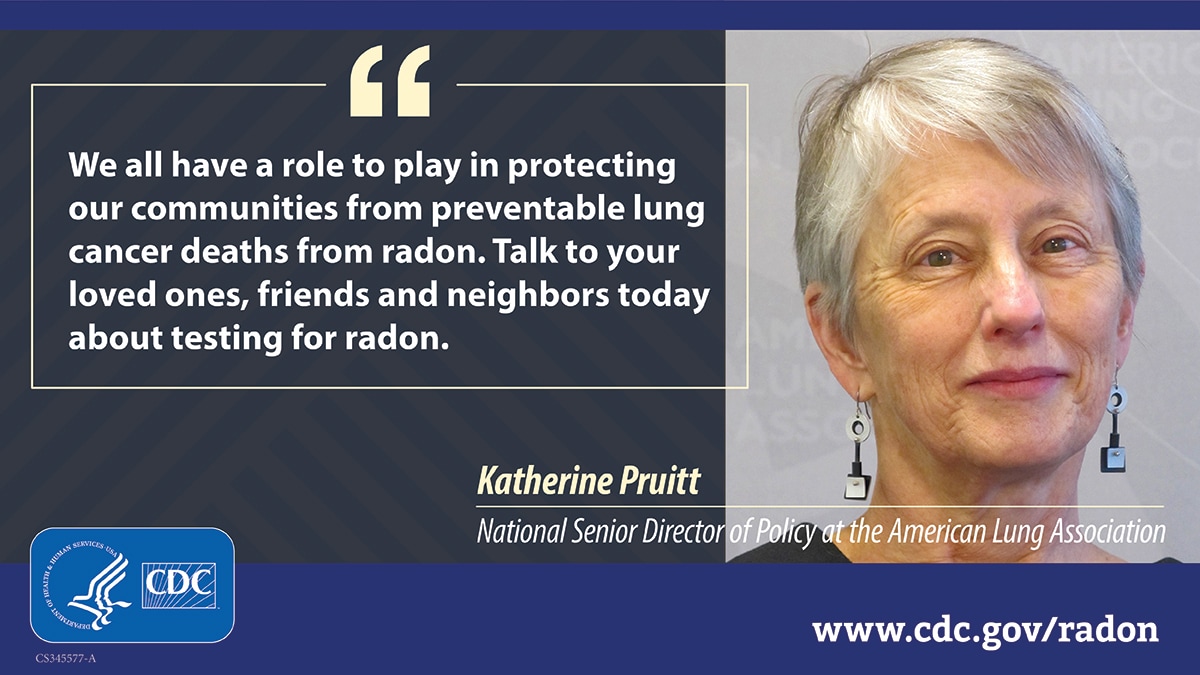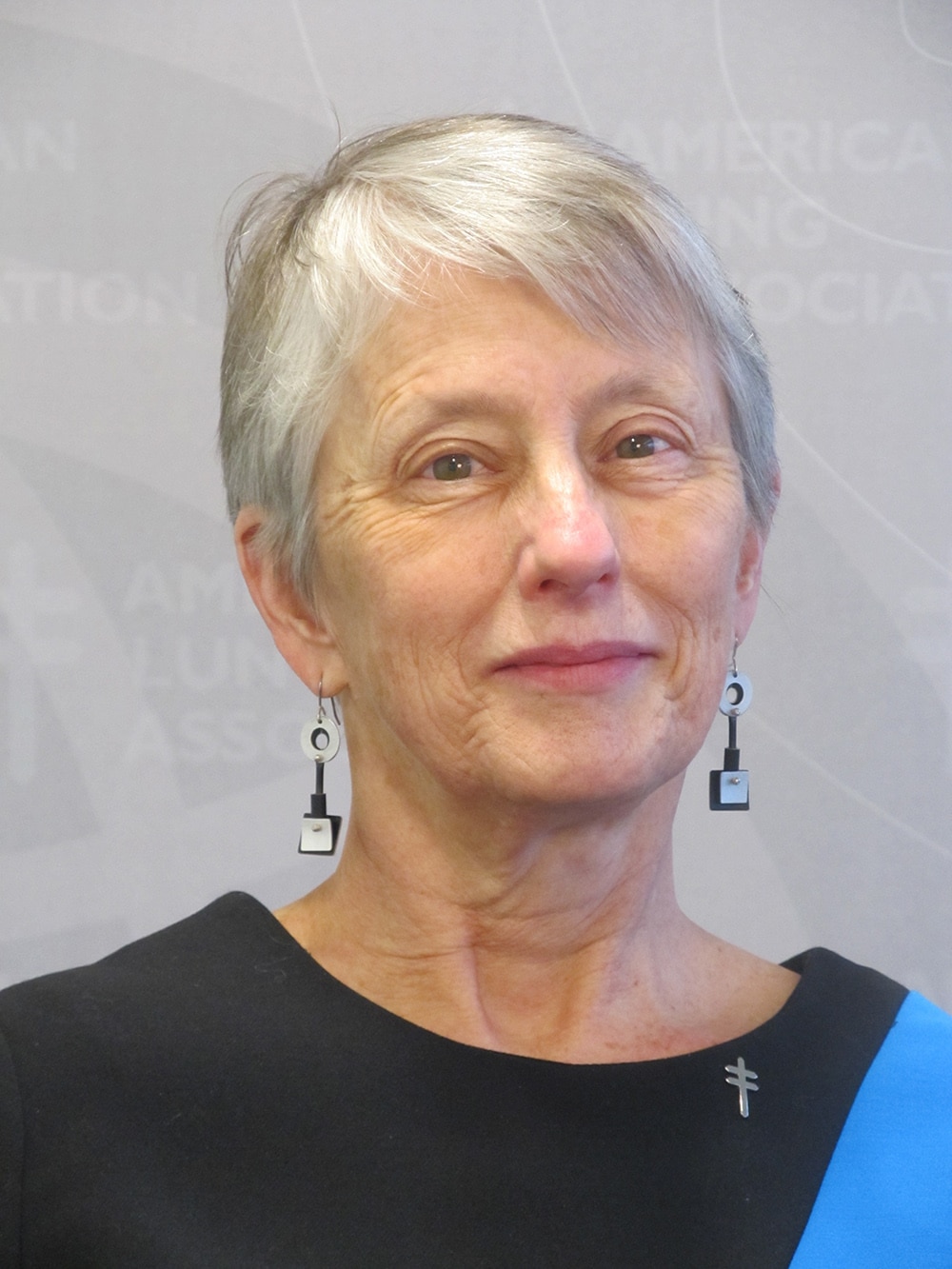At a glance
- Radon is estimated to cause about 21,000 lung-cancer related deaths per year.
- Many people have never heard of radon.
- You can spread awareness about radon by sharing information with your landlord, if you rent, and with building managers of you and your family members' workplaces and schools.
- Additionally, ask your healthcare provider about any concerns.
- Reach out to policymakers about ways they can help expand radon prevention at the public level.

Why outreach about Radon is important
According to the Environmental Protection Agency (EPA), radon is estimated to cause about 21,000 lung-cancer related deaths per year. Radon-associated deaths can be prevented if people keep radon at lower levels in homes and buildings through testing and mitigation. If people are not aware of radon, they will miss the opportunity to protect themselves and others from lung cancer. Effective public outreach and education is the foundation for reducing the number of deaths from long-term radon exposure.
30 years of radon outreach
For almost 30 years, Katherine Pruitt of the American Lung Association has been part of building this foundation at the national level. Katherine is the National Senior Director of Policy at the American Lung Association and convenor of the National Radon Action Plan (NRAP) Leadership Council. The NRAP Council is a private-public partnership with representation from experts on health, housing, radiation, energy, cancer, and building science under the leadership of the American Lung Association.

Katherine says, "After nearly three decades, it still surprises me how many people have never heard of radon, let alone understand the risks and how to protect themselves." Katherine's long history of working on radon risk reduction, and her experience as a health educator, give her a unique perspective on how and why to communicate about radon.
When Katherine Pruitt started working at the American Lung Association on the Radon Public Outreach program in 1993, indoor air pollution was just emerging as a topic in environmental health. In the last few decades, the number of buildings tested for radon nationally has increased.
Still, radon awareness lags behind other environmental health issues in the public sphere. It's a challenging topic to engage the public in. Even when people have heard of radon, it's easy to forget about. It cannot be seen or smelled and does not cause any immediate health effects. And while testing and mitigation may not seem like laborious tasks, they do require people to go a little out of their way to protect themselves from a threat that doesn't seem to impact their daily lives.
This is in contrast to easily followed public health interventions like avoiding certain foods or substances. People may be more likely to take action to protect themselves from an immediate threat, like washing their hands during flu season.
Katherine has also observed another challenge in raising awareness, "There's no 'enemy' for radon. There's no industry or corporation to blame for the deaths that can occur from radon exposure. People tend to notice and rally behind issues that have an 'enemy'. Yet many of those issues are less pervasive or deadly."
Just like an eye-catching news headline, a public health threat that triggers emotional responses like anger and blame or shock and fear are the ones people are most likely to notice, remember, and act upon.
Refreshing the approach to outreach
About 2 years ago, Katherine Pruitt was appointed to her current position as National Senior Director of Policy and convener of the NRAP Leadership Council. Under her leadership, the NRAP Council published the National Radon Action Plan, 2021-2025 in January 2022. The 5-year plan sets a goal for the nation to find, fix, and prevent high indoor radon levels in 8 million buildings by 2025 and prevent 3,500 lung cancer deaths per year.
Like previous versions of the national strategy, the newest plan includes four main pillars:
- build in risk reduction
- provide incentives and support for radon risk reduction
- test and mitigate using professional radon services
- increase visibility
This last pillar aims to expand public awareness about the risk of radon and the importance of radon risk reduction.
Outreach efforts in the previous version of the action plan were focused primarily on single-family homeowners. The 2021-2025 plan takes a health equity approach with communication objectives, products, and plans to educate and empower previously underrepresented populations. This includes people with low income, people who rent, people living in multifamily homes, American Indians, non-English speakers, and people with low literacy.
One way of reaching these populations is by focusing outreach efforts to people who are trusted and in direct contact with them to motivate them. This includes leaders of cultural or ethnic groups, government and local public health officials, faith leaders, and healthcare providers. Katherine describes the importance of this new approach, "We need to communicate to reach people where they are, to spread the word to everyone; virtually everyone could be at risk."
The new edition of NRAP also shifts the focus of outreach to intermediaries. Intermediaries are people in positions to control or influence radon prevention measures in places people can be exposed to radon beyond single-family homes. These include school health organizations, government officials, employers, real estate agents, and rental owners or landlords. This approach in the newest NRAP aligns and supports the goal of working toward health equity by filling previous gaps in awareness and resources.
Why spread the word about radon
You don't need to have a 30-year career in radon outreach efforts to have an impact and help save lives. Your direct conversation with someone may be more impactful and memorable for that person than public outreach efforts from organizations and agencies. As Katherine states, "We all have a role to play in protecting our communities from preventable lung cancer deaths from radon. Education and outreach can make a difference. Talk to your loved ones, friends and neighbors today about testing for radon."
You can share information with your landlord, if you rent, and with building managers of you and your family members' workplaces and schools. Ask your healthcare provider about any concerns, and reach out to policymakers about ways they can help expand radon prevention at the public level.
